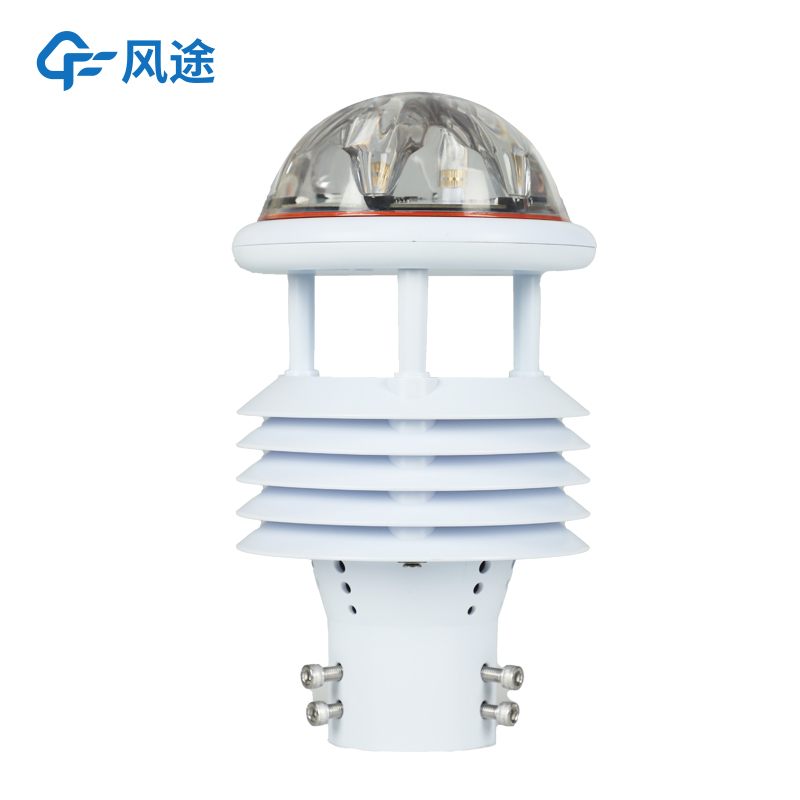Tianqiong Sensor IOT Technology Co., Ltd
Sales Manager:Ms. Emily Wang
Cel,Whatsapp,Wechat:+86 15898932201
Email:info@fengtutec.com
Add:No. 155 Optoelectronic Industry Accelerator, Gaoxin District, Weifang, Shandong, China

Sales Manager:Ms. Emily Wang
Cel,Whatsapp,Wechat:+86 15898932201
Email:info@fengtutec.com
Add:No. 155 Optoelectronic Industry Accelerator, Gaoxin District, Weifang, Shandong, China
time:2025-09-22 08:56:13 source:Weather Station viewed:178 time
Traditional meteorological monitoring often relies on large, fixed national-level weather observation stations. While these stations provide extremely accurate data, they also suffer from high construction costs, low density, and limited coverage. With social development, our demand for meteorological data has become more refined, diversified, and instantaneous.
Moreover, the popularization of wireless communication technologies such as 4G/5G, LoRa, and NB-IoT has made it possible for massive small devices to connect to the network and transmit data back, spurring the demand for distributed sensor networks.
Therefore, our company has launched the micro weather sensor, model FT-WQX6, a highly integrated micro environmental monitoring device that can real-time monitor six basic meteorological parameters.
Its innovation lies in completely abandoning the traditional mechanical rotating cups and wind vanes. With no starting wind speed limit (can measure even calm winds), no wear, and maintenance-free operation, it greatly improves reliability and lifespan in harsh environments.
Furthermore, compared to traditional tipping bucket rain gauges, it is less likely to be clogged by leaves and dust, has stronger anti-interference capabilities, and performs better in light rain and heavy rain scenarios.
Overall, the FT-WQX6 integrates six sensors into a compact body, reducing deployment difficulty and cost. It can be quickly installed by one person and is ready to use immediately after pole installation.
Its housing is made of ASA engineering plastic, which has UV resistance, corrosion resistance, and salt spray resistance, maintaining its shape and color even after long-term use.
It supports RS485 (Modbus protocol) wired output, allowing easy integration into industrial systems such as PLCs and industrial computers.
An optional 4G/GPRS wireless module is available, enabling direct data upload to cloud platforms. Users can remotely view real-time data and device status through web pages or mobile apps, aligning with current IoT application models.
Currently, new energy (wind farms, photovoltaic power plants), precision agriculture, forest fire prevention, airport navigation, bridge safety, and other fields all require real-time, continuous meteorological data at specific locations for decision-making. However, traditional large-scale stations have high construction and maintenance costs and cannot be deployed quickly. The FT-WQX6 provides the market with a cost-controllable, easy-to-install, plug-and-play meteorological monitoring solution.
It is a technological product born in response to the distributed sensing needs of the IoT era, providing effective data for all industries to achieve refined management and intelligent decision-making!

In the field of photovoltaic power generation, accurate environmental data monitoring is crucial for improving power generation efficiency, and all of this is inseparable from reliable professional equipment.The Photovoltaic Weather Station FT-WQX8B is a comprehensive environmental monitoring device...
Water Quality Monitoring Data Buoys can be fixed in water bodies for a long time, collecting real-time and continuous water quality data such as water temperature, pH value, dissolved oxygen, ammonia nitrogen, and turbidity. With the help of this real-time data, dynamic changes in water quality can...
The Portable Weather Station, with its highly integrated and user - friendly design, has become a common device in fields such as outdoor activities, emergency response, and scientific research expeditions. It integrates a variety of high - precision sensors for temperature, humidity, wind speed, wi...
Portable Weather Station is a highly integrated, low-power, and rapidly deployable high-precision automatic meteorological observation device. It is suitable for various scenarios such as emergency short-term meteorological observation, mobile meteorological monitoring, and microclimate environment monitoring. It is primarily used for data acquisition in fields such as meteorology, agriculture and forestry, environmental protection, and emergency monitoring....